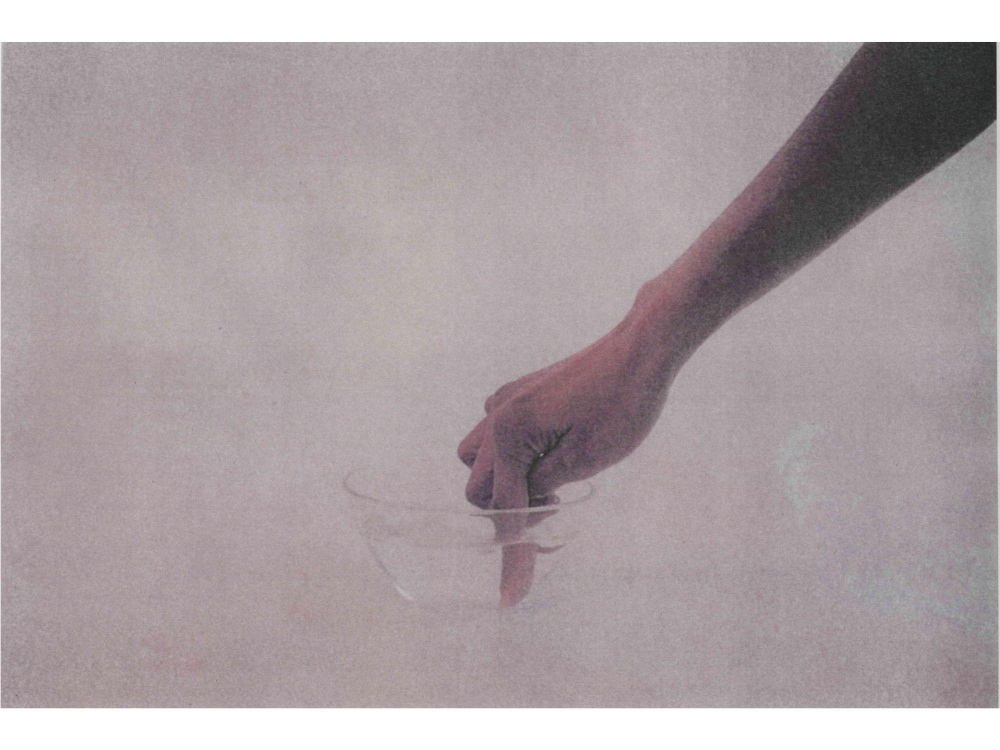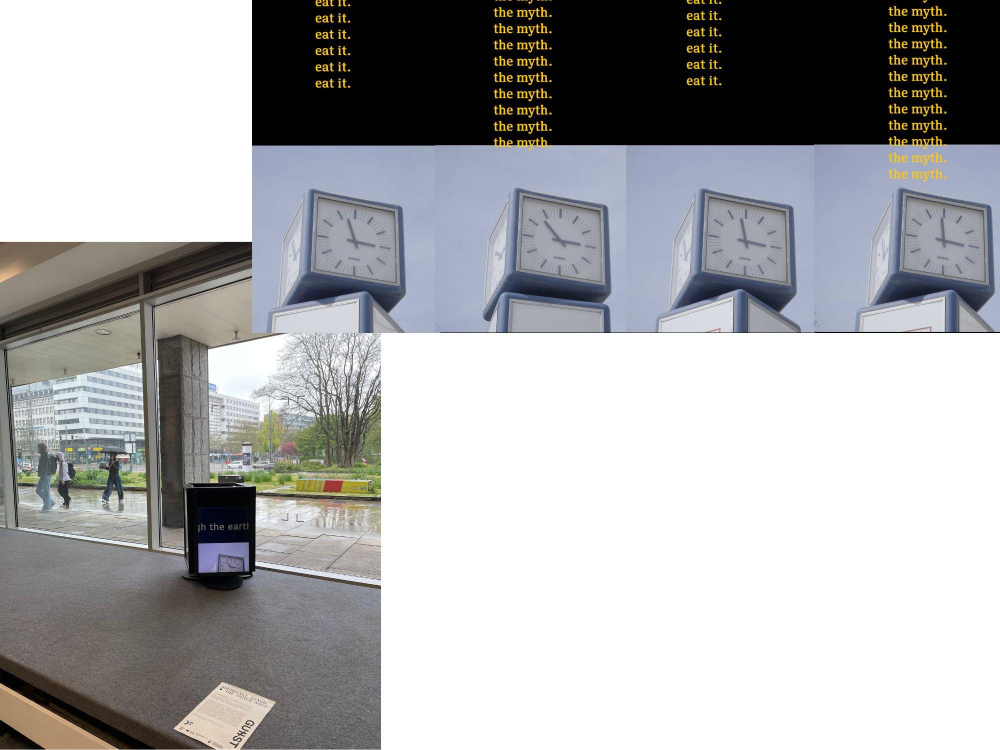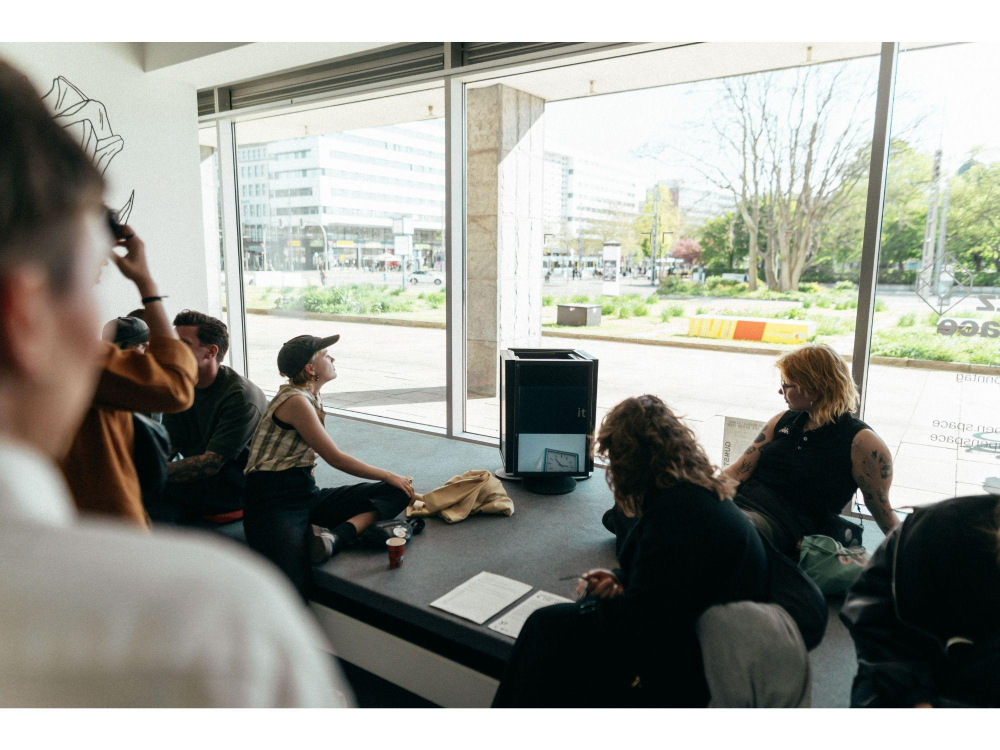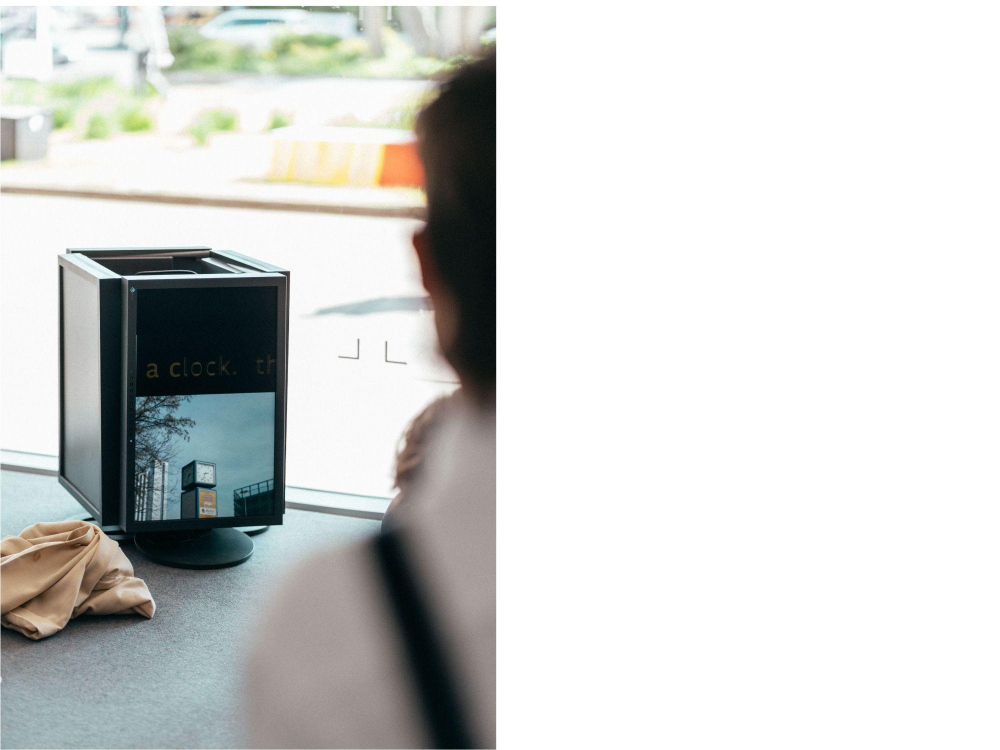-
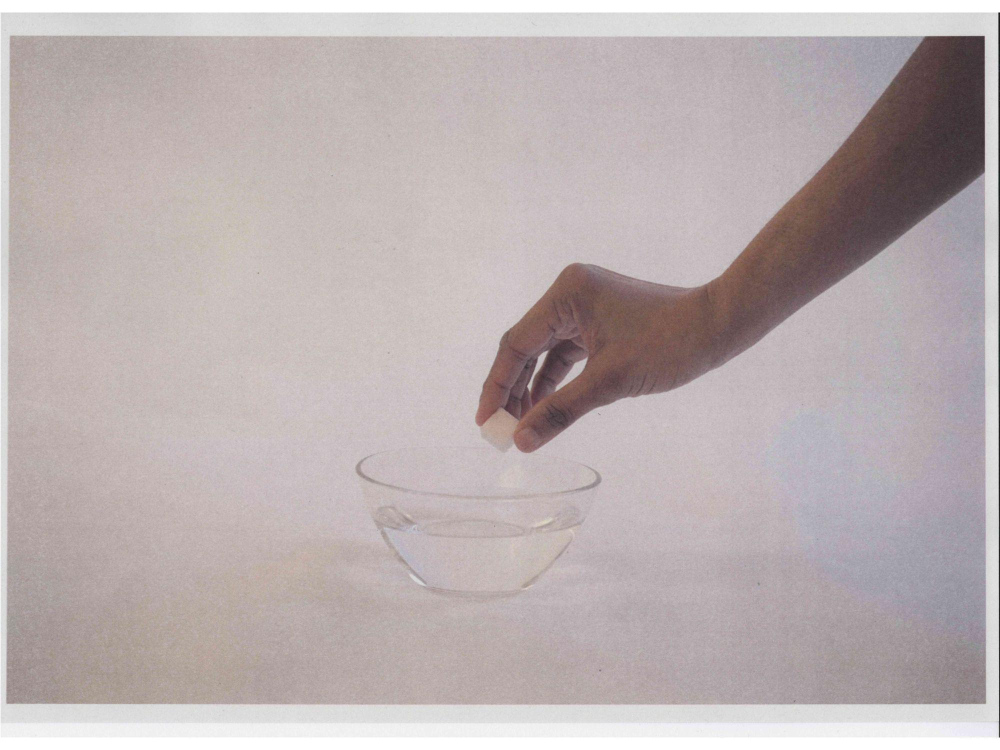
 photo: Ernesto Uhlmann / Klub Solitaer
photo: Ernesto Uhlmann / Klub Solitaer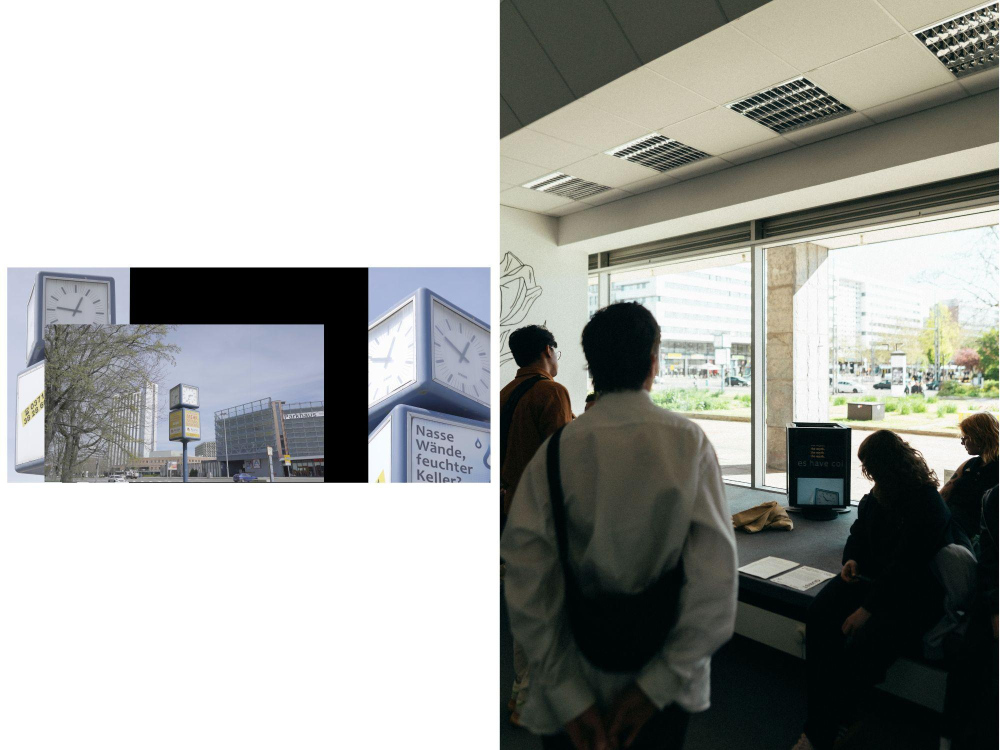 (left) still: but you are made of sugar photo: Ernesto Uhlmann / Klub Solitaer
(left) still: but you are made of sugar photo: Ernesto Uhlmann / Klub Solitaerbut you are made of sugar
4-channel video (loop), no audio, print/scans
4 mins, 2025––
-
What is a gathering? When does a gathering become a crowd? And when does a crowd become a mob?
There is an imperceptible relationship between the politics of public time-keeping and the role that public clocks have played in shaping the public sphere.
Since their presence in the public (around the late 15th century), public mechanical clocks have been powerful symbols of civic identity, transforming public life by (re)directing how people socialise or gather in urban spaces. The clocks have been centres of control and hierarchies (the Church vs. Academy of Sciences vs. the city management bureaus); eventually becoming more individualised and decentralised. In the GDR, timekeeping was tied to values like productivity, discipline, and collective responsibility. Public clocks, installed in critical centres of pedestrian traffic, supported these ideals by synchronising daily life across workplaces, schools, and transportation systems. In keeping workers productive and on time, the towering presence of public clocks would only further write itself into the stereotype (the myth? the force?) of the German punctuality. Either way, the message was clear as day— one’s time was not just personal— it was communal and centrally planned.
Besides becoming monuments of daily life, many clocks would be accompanied by slogans, news headlines or commercial for local businesses—a fusion of timekeeping and ideological communication. They’d act as key landmarks, meeting points as well as active spots for demonstrations and protests, and by extension, becoming sites for surveillance. Making these artefacts a charged site. A political and a hegemonic site. A dialectical site.
Mimicking the four faced and slowly-rotating media box attached to the public clocks that are ubiquitous in the city centre, the four-channel expands on the representation of clocks in the works of German painters such as Carl Spitzweg or in films of Fritz Lang like Metropolis, wherein the workers rise against the tyranny of their daily routine and the presence of a massive clock that becomes a bludgeoning force dictating time and control over the people. One of the four faces of the screen looks towards a public clock in the square outside the gallery space while the other faces an over 7 meter tall monument dedicated to Marx installed in 1971 by the GDR that has since become a major landmark in (and for) Chemnitz.
But You Are Made of Sugar is produced under the auspices of Klub Solitaer and its project Dialogfelder. -
__
Chemnitz Open Space| Curated by: Ewa Meister
Klub Solitaer
Many Thanks to:
Robert Verch and Brit Haßler -
